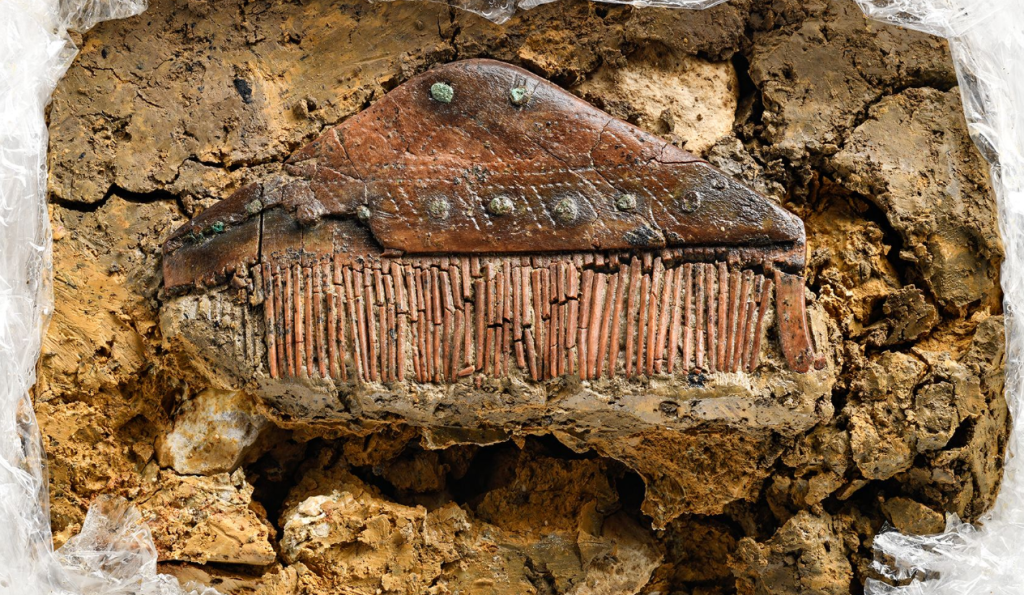The grave of a ‘barbarian’ buried 1,700 years ago near the Roman Empire’s border has been unearthed in Germany.
Others are reading now
Archaeologists have unearthed a 1,700-year-old grave of a “barbarian” near the former frontier of the Roman Empire in modern-day Germany.
The grave was recently found in the village of Gerstetten, 65 km east of Stuttgart. According to the archaeologists, it belonged to a man in his 60s, buried with valuable goods that hint at his elevated status.
The burial site contained valuable items, including pottery, glassware, and a fine-tooth comb, suggesting the man held a prominent status. His grave was elaborately constructed within a wooden chamber at a solitary, elevated location, according to researchers in a press release by Stuttgart Regional Council.
Also read

The Barbarians
The Romans referred to Germanic tribal people as “barbarians,” meaning “people who speak differently.” Archaeologists believe the man likely belonged to the Alemanni, a Germanic tribe that lived near the Upper Rhine River.
Germanic tribes, including the Alemanni, played a key role in the eventual fall of the Western Roman Empire in the fifth century. The 4th to 8th centuries marked a period of change in Europe, known as the Migration Period. While this time period lacks detailed written records, archaeological findings from barbarian cemeteries provide essential insights into the era’s cultural and social transformations.
Graves from this period are rare, particularly early Germanic ones. Most discoveries have been made in the southwestern German state of Baden-Württemberg, near the borders of France and Switzerland.
The grave’s location, on Bismarckstraße in Gerstetten, was excavated in early May, and the discovery was announced by the Stuttgart Regional Council.
Two ceramic vessels from the grave have been restored, and carbon dating of a rib from the site confirmed the man died between 263 and 342 AD.



